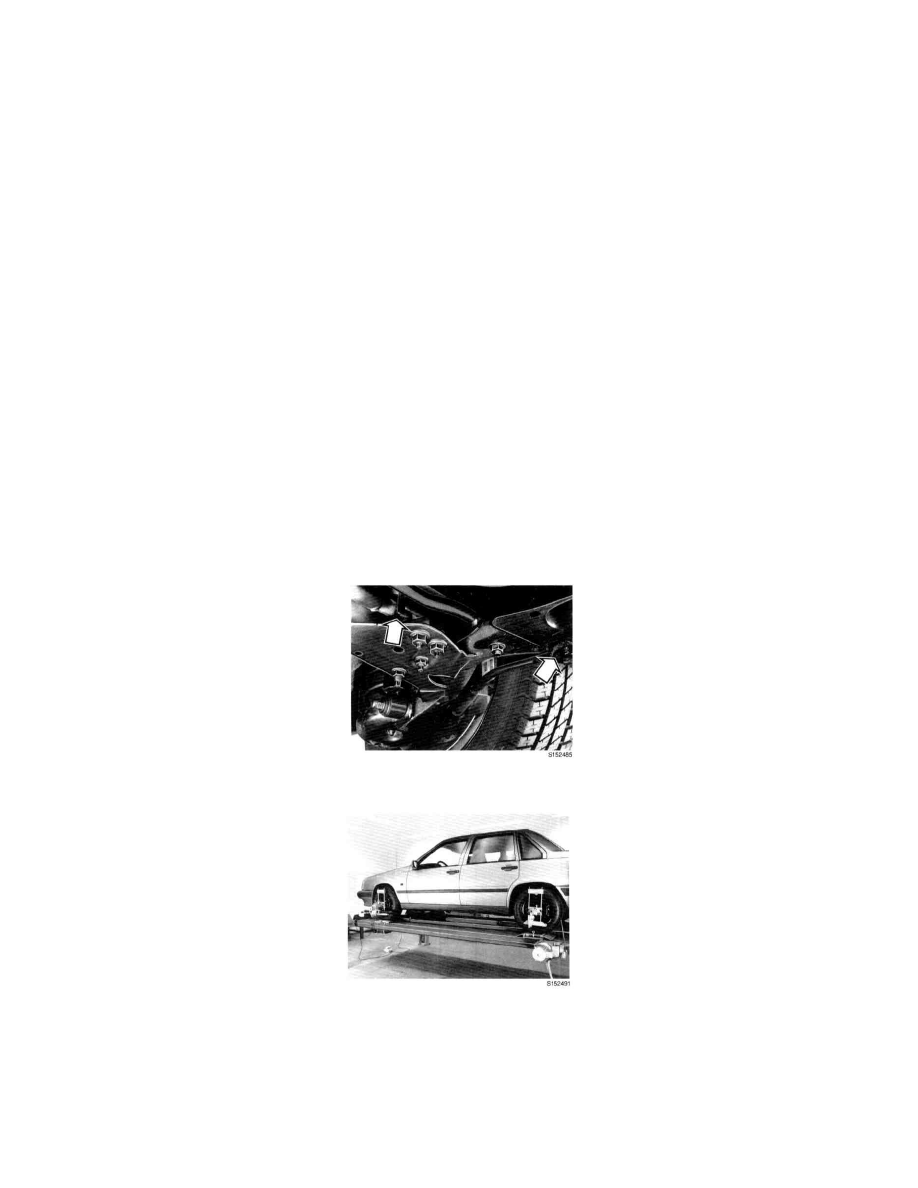V70 GL L5-2.4L VIN 55 B5254S (1998)

Alignment: Service and Repair
Alignment
Front
The wheel alignment must be correct to achieve satisfactory steering characteristics and to minimize tire wear. The alignment settings include caster
(axle inclination), camber (wheel inclination), Ackermann angle (toe-out on turns), kingpin inclination and toe-in/toe out.
NOTE: All settings must be measured with the car unladen.
Since the following defects may affect the wheel alignment, they must be rectified, if necessary, before measuring and/or adjusting the settings.
1. Different tire pressures.
2. Differences in tire wear.
3. Play in front wheel bearings.
4. Play in ball joints or control arm mountings.
5. Broken springs.
6. Damaged steering gear.
7. Play in tie rod (track rod) joints.
8. Damage to suspension strut upper mounting.
9. Unusual (temporary) equipment or load.
Rear
NOTE: Toe in can be adjusted. Camber, on the other hand can only be checked. All measurements should be made on an empty car. The level of fuel in
the fuel tank will not affect readings. Check all tire pressures.
1. Raise the rear of the car.
2. Check for play in:
-
Wheel bearings (if there is any play the hub unit should be replaced).
-
The trailing arm and transverse arm mounting bushings.
3. Set up measuring equipment. Set up and calibrate in accordance with instructions for the equipment in question.
Front
NOTE: Adjustment of the camber, if applicable, must always be carried out before adjusting the toe-in. Since the rear wheels also have an adjustable
toe-in, the front wheel toe-in must be adjusted in relation to the thrust axis of the car in order to achieve maximum stability and minimize tire wear. All
measurements must be carried out with the car unladen. Measurement is unaffected by the level in the fuel tank. Check tire pressures all round.
